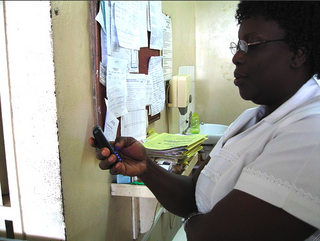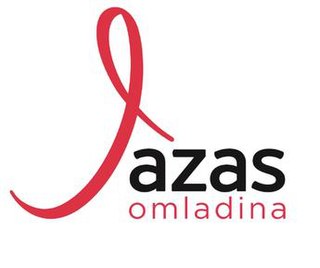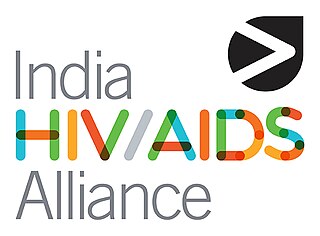The Caribbean is the second-most affected region in the world in terms of HIV prevalence rates. Based on 2009 data, about 1.0 percent of the adult population is living with the disease, which is higher than any other region except Sub-Saharan Africa. Several factors influence this epidemic, including poverty, gender, sex tourism, and stigma. HIV incidence in the Caribbean declined 49% between 2001 and 2012. Different countries have employed a variety of responses to the disease, with a range of challenges and successes.
Comprehensive sex education (CSE) is a sex education instruction method based on-curriculum that aims to give students the knowledge, attitudes, skills and values to make appropriate and healthy choices in their sexual lives. The intention is that this understanding will prevent students from contracting sexually transmitted infections in the future, including HIV and HPV. CSE is also designed with the intention of reducing unplanned and unwanted pregnancies, as well as lowering rates of domestic and sexual violence, thus contributing to a healthier society, both physically and mentally.
The Demographic and Health Surveys (DHS) Program is responsible for collecting and disseminating accurate, nationally representative data on health and population in developing countries. The project is implemented by ICF International and is funded by the United States Agency for International Development (USAID) with contributions from other donors such as UNICEF, UNFPA, WHO, and UNAIDS.

mHealth is an abbreviation for mobile health, a term used for the practice of medicine and public health supported by mobile devices. The term is most commonly used in reference to using mobile communication devices, such as mobile phones, tablet computers and PDAs, and wearable devices such as smart watches, for health services, information, and data collection. The mHealth field has emerged as a sub-segment of eHealth, the use of information and communication technology (ICT), such as computers, mobile phones, communications satellite, patient monitors, etc., for health services and information. mHealth applications include the use of mobile devices in collecting community and clinical health data, delivery of healthcare information to practitioners, researchers and patients, real-time monitoring of patient vital signs, the direct provision of care as well as training and collaboration of health workers.
The infection rate of HIV/AIDS in Ivory Coast is estimated at 2.70% in adults ages 15–49. Ivory Coast has a generalized HIV epidemic with the highest prevalence rate in the West African region. The prevalence rate appears to have remained relatively stable for the past decade, with recent declines among pregnant women in urban areas. Civil conflict in the country continues to hinder the collection of new national HIV-related data.

HIV/AIDS in Lesotho constitutes a very serious threat to the Basotho people and Lesotho's economic development. Since its initial detection in 1986, HIV/AIDS has spread at alarming rates in Lesotho. In 2000, King Letsie III declared HIV/AIDS a natural disaster. According to the Joint United Nations Programme on HIV/AIDS (UNAIDS) in 2016, Lesotho's adult prevalence rate of 25% is the second highest in the world, following Swaziland.

As of 2012, approximately 1,100,000 people in Malawi are HIV-positive, which represents 10.8% of the country's population. Because the Malawian government was initially slow to respond to the epidemic under the leadership of Hastings Banda (1966–1994), the prevalence of HIV/AIDS increased drastically between 1985, when the disease was first identified in Malawi, and 1993, when HIV prevalence rates were estimated to be as high as 30% among pregnant women. The Malawian food crisis in 2002 resulted, at least in part, from a loss of agricultural productivity due to the prevalence of HIV/AIDS. Various degrees of government involvement under the leadership of Bakili Muluzi (1994–2004) and Bingu wa Mutharika (2004–2012) resulted in a gradual decline in HIV prevalence, and, in 2003, many people living in Malawi gained access to antiretroviral therapy. Condoms have become more widely available to the public through non-governmental organizations, and more Malawians are taking advantage of HIV testing services.

Mozambique is a country particularly hard-hit by the HIV/AIDS epidemic. In fact, according to 2008 UNAIDS estimates, this southeast African nation has the 8th highest HIV rate in the world. With 1,600,000 Mozambicans living with HIV, 990,000 of which are women and children, Mozambique's government realizes that much work must be done to eradicate this infectious disease. To reduce HIV/AIDS within the country, Mozambique has partnered with numerous global organizations to provide its citizens with augmented access to antiretroviral therapy and prevention techniques, such as condom use. A surge toward the treatment and prevention of HIV/AIDS in women and children has additionally aided in Mozambique's aim to fulfill its Millennium Development Goals (MDGs). Nevertheless, HIV/AIDS has made a drastic impact on Mozambique; individual risk behaviors are still greatly influenced by social norms, and much still needs to be done to address the epidemic and provide care and treatment to those in need.
With less than 0.1 percent of the population estimated to be HIV-positive, Bangladesh is a low HIV-prevalence country.

Nepal's first cases of HIV/AIDS were reported in 1988 and the disease has primarily been transmitted by intravenous drug use and unprotected sex. Among the two, HIV epidemic is largely attributed to sexual transmissions which account for more than 85% of the total new HIV infections.Available data indicate that there was a sharp increase in the number of new infections starting in 1996, coinciding with the outbreak of civil unrest. The infection rate of HIV/AIDS in Nepal among the adult population is estimated to be below the 1 percent threshold which is considered "generalized and severe". However, the prevalence rate masks a concentrated epidemic among at-risk populations such as female sex workers (FSWs), male sex workers (MSWs), injecting drug users (IDUs), men who have sex with men (MSM), Transgender Groups (TG), migrants and Male Labor Migrants(MLMs) as well as their spouses. Cultural factors have also been shown to play a significant role in the spread of HIV and AIDS in Nepal. Some of these cultural factors are related with social taboos which creates challenges for open discussions regarding sex and sexual habits, as do denial, stigma, and discrimination that surround HIV and AIDS. Other factors such as poverty, low levels of education and literacy, political instability combined with gender inequality make the tasks challenging.
Cases of HIV/AIDS in Peru are considered to have reached the level of a concentrated epidemic. According to a population-based survey conducted in Peru’s 24 largest cities in 2002, adult HIV prevalence was estimated to be less than 1 percent. The survey demonstrated that cases are unevenly distributed in the country, affecting mostly young people between the ages of 25 and 34. As of July 2010, the cumulative reported number of persons infected with HIV was 41,638, and there were 26,566 cases of AIDS, according to the Ministry of Health (MOH), and the male/female ratio for AIDS diagnoses in 2009 was 3.02 to 1. The Joint United Nations Program on HIV/AIDS (UNAIDS) estimates 76,000 Peruvians are HIV-positive, meaning that many people at risk do not know their status. There were 3,300 deaths due to AIDS in Peru in 2007, down from 5,600 deaths in 2005.
With less than 1 percent of the population estimated to be HIV-positive, Egypt is a low-HIV-prevalence country. However, between the years 2006 and 2011, HIV prevalence rates in Egypt increased tenfold. Until 2011, the average number of new cases of HIV in Egypt was 400 per year. But, in 2012 and 2013 it increased to about 600 new cases and in 2014 it reached 880 new cases per year. According to UNAIDS 2016 statistics, there are about 11,000 people currently living with HIV in Egypt. However, unsafe behaviors among most-at-risk populations and limited condom usage among the general population place Egypt at risk of a broader epidemic.
AIDS Information Centre-Uganda (AIC) is a Non-Governmental Organization in Uganda established in 1990 to provide Voluntary Counseling and Testing (VCT) for Human Immune Deficiency Virus (HIV). The Organization was founded as a result of growing demand from people who wanted to know their HIV status. At this time the HIV/AIDS in Uganda was high.

loveLife is a youth focused HIV prevention initiative in South Africa. The not-for-profit organisation promotes AIDS-free living among South African youth aged between 12 and 19 by employing a holistic approach to youth development and behaviour change that motivates adolescents to take charge of their lives for brighter futures.

Yugoslav Youth Association Against AIDS – Youth of JAZAS is non-profit, humanitarian organization committed to HIV prevention and support to the people living with HIV. Ever since its establishment in 1994, it has continuously been implementing projects of peer education, social and psychological support, protection of human rights, promoting voluntary activism, distribution of condoms etc.

Founded in 1999, Alliance India is a non-governmental organisation operating in partnership with civil society, government and communities to support sustained responses to HIV in India that protect rights and improve health. Complementing the Indian national programme, we build capacity, provide technical support and advocate to strengthen the delivery of effective, innovative, community-based HIV programmes to vulnerable populations: sex workers, men who have sex with men (MSM), transgender people, hijras, people who inject drugs (PWID), and people living with HIV.
Education has been identified as a common social vaccine against contracting HIV, resulting in the more educated less likely to be infected. Accurate information of health risks suggests a negative linear relationship between years of education and HIV infection rate. UNESCO Director-General made a statement during 2011 World AIDS Day, identifying education as one of the three primary concerns, and urging for it to become a full-fledged priority. By implementing educational policies, UNESCO aims to make sure all individuals, in and out of formal education, have access to comprehensive HIV education. Improving the education of HIV/AIDS has become a growing concern, with 1 in 4 students aged 16 and above stating they had learned nothing about HIV/AIDS in school during a Sex Education Forum survey in England. The concerns are further stressed since learning about sexually transmitted diseases is the only aspect of sex education that is compulsory for all secondary schools in England and Wales.
Love Matters is a global program providing information on relationships, sex and love. The idea was first developed in the Netherlands by the independent media producer by Michele Ernsting and Michelle Chakkalackal at RNW Media. It has been referred to as a freedom of speech program. Its current target countries are Kenya, Uganda, China, Egypt, Mexico, Venezuela and India.







